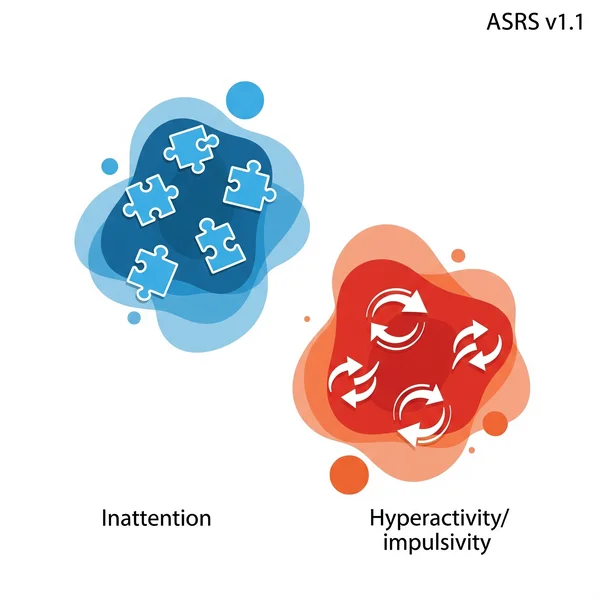What is ASRS v1.1 Test? Your Essential Guide
Have you ever wondered, what is the ASRS test and how can it help understand adult ADHD? If you're seeking clarity on attention, focus, or impulsivity, you're in the right place. The Adult ADHD Self-Report Scale version 1.1 (ASRS v1.1) is a widely recognized screening tool designed to help adults identify potential symptoms of Attention-Deficit/Hyperactivity Disorder. This guide will walk you through everything you need to know about this valuable resource. Ready to learn more about this important ADHD screening tool? You can discover the ASRS v1.1 test and gain initial insights.
What Exactly is the ASRS v1.1 Test?
So, what is the ASRS test used for? At its core, the ASRS v1.1 is a self-report questionnaire developed by the World Health Organization (WHO) along with leading psychiatrists and researchers. It's designed as an initial step for adults who suspect they might have ADHD. It’s important to understand that this isn't a diagnostic tool on its own, but rather a highly effective preliminary screening instrument. The ASRS v1.1 provides a structured way to reflect on behaviors and symptoms commonly associated with attention deficit and hyperactivity disorder in adults. For those exploring their mental health, it offers a simple, accessible starting point.
Defining the Adult ADHD Self-Report Scale (ASRS)
The Adult ADHD Self-Report Scale (ASRS) v1.1 specifically aims to capture the nuances of how ADHD manifests in adulthood. Unlike childhood ADHD, adult symptoms can often be more subtle or internalized. This self-assessment tool helps bring these potential symptoms to light.
Origin and Development by the WHO
The credibility of the ASRS v1.1 is significantly backed by its development in collaboration with the World Health Organization (WHO). This ensures that the questions are based on extensive research and global health perspectives on ADHD. Its development involved a rigorous process to ensure its relevance and utility as a screening tool.
Primary Function: An ADHD Screening Tool
The primary function of the ASRS v1.1 is to serve as an ADHD screening tool. It helps individuals and healthcare professionals quickly gauge the likelihood that an adult might be experiencing symptoms consistent with ADHD. It's a crucial first step before a more comprehensive diagnostic criteria assessment.

The Foundation: DSM-IV-TR Criteria in ASRS v1.1
A common question is, how accurate is the ASRS test in reflecting established medical standards? The ASRS v1.1 is grounded in the DSM-IV-TR ADHD criteria (Diagnostic and Statistical Manual of Mental Disorders, 4th Edition, Text Revision). This means the questions are carefully crafted to align with the recognized diagnostic benchmarks for ADHD, lending it significant credibility. While newer DSM versions exist, the ASRS v1.1 based on DSM-IV-TR remains a validated and widely used instrument for preliminary screening.
Linking ASRS Questions to DSM-IV-TR
Each question in the ASRS v1.1 is designed to reflect specific diagnostic criteria outlined in the DSM-IV-TR. This direct link ensures that the self-report addresses clinically relevant aspects of attention deficit and hyperactivity disorder.
Importance of Standardized Criteria
Using standardized criteria like those from the DSM-IV-TR ensures consistency and reliability in ADHD screening. It allows for a more objective initial self-assessment before seeking a formal diagnosis. Understanding this foundation can help in appreciating the ASRS test's role in understanding ADHD.
ASRS v1.1 Content: The 18 Questions & Symptom Areas
The ASRS v1.1 consists of 18 questions in total, divided into two parts. These questions cover the core symptom areas of adult ADHD: inattention and hyperactivity/impulsivity. This structure allows for a focused yet comprehensive initial look at potential ADHD traits. Many users find that reviewing these specific questions helps them better articulate their own experiences. What does ASRS stand for? It stands for Adult ADHD Self-Report Scale.
Part A: Focus on Inattention Symptoms (First 6 Questions)
The first six questions (Part A) of the ASRS v1.1 are considered particularly indicative of ADHD symptoms related to attention deficit. These questions often explore difficulties with sustaining focus, organization, and forgetfulness. A certain number of "yes" responses in this section can strongly suggest the need for further evaluation.
Part B: Assessing Hyperactivity and Impulsivity (Remaining 12 Questions)
The remaining twelve questions (Part B) delve into symptoms of hyperactivity disorder and impulsivity. These might include feeling restless, talking excessively, or acting impulsively. While Part A is often emphasized for screening, Part B provides a fuller picture of the potential symptom spectrum.

How the 18 Questions Reflect ADHD Traits
Collectively, these 18 questions provide a snapshot of how ADHD traits might be impacting an adult's daily life. They are framed to be easily understood and answered based on recent experiences, making the self-report questionnaire user-friendly.
Purpose and Uses of the ASRS v1.1 Test
The ASRS v1.1, as an ADHD screening tool, serves multiple important purposes. It's not just about getting a score; it's about gaining initial insights and facilitating further action if needed. Who developed the ASRS? It was a collaborative effort involving the WHO and experts in adult ADHD.
As an Initial ADHD Screening Measure
Its primary use is as an accessible, first-line ADHD screening measure for adults. It can help individuals quickly identify if their experiences warrant a more in-depth discussion with a mental health professional.
Aiding Self-Understanding and Awareness
For many, taking the ASRS v1.1 can be an enlightening experience, aiding in self-understanding. It can validate feelings or struggles they've had, providing a name to what they might be experiencing and helping in understanding ADHD better.
Facilitating Conversations with Healthcare Professionals
The results from an ASRS test can be an excellent starting point for a conversation with a doctor or mental health specialist. Having a completed self-report questionnaire can make it easier to describe symptoms and concerns. Thinking about your own experiences with these symptoms? You can try the ASRS v1.1 test for yourself to see how it relates.
Limitations: What the ASRS v1.1 Test Cannot Do
While the ASRS v1.1 is a valuable ADHD screening tool, it's crucial to understand its limitations. Can ASRS diagnose ADHD? The answer is no. It is designed to identify individuals who may have ADHD and would benefit from a full clinical evaluation.
ASRS is Not a Diagnostic Tool
It cannot provide a formal diagnosis of ADHD. A comprehensive diagnosis requires a clinical interview and assessment by a qualified healthcare professional who will consider the full diagnostic criteria, history, and other factors.
The Importance of Professional Evaluation
If the ASRS v1.1 suggests a high likelihood of ADHD, the next and most important step is to seek a professional evaluation. Only a trained clinician can confirm a diagnosis and discuss appropriate management or treatment options. This step is vital for accurate mental health care.

Your First Step with the ASRS v1.1 Test
The ASRS v1.1 test is an essential and accessible guide for any adult questioning if they might have ADHD. It offers a scientifically-backed, straightforward way to conduct a preliminary screening based on established DSM-IV-TR ADHD criteria. By understanding what the ASRS test is, its contents, uses, and limitations, you're better equipped to take an informed first step in your journey of self-assessment and understanding.
If you're curious about your own attention and focus, or if any of the symptom areas discussed resonate with you, taking the test can provide valuable initial insights. What are your thoughts on using self-report questionnaires for initial screening? Don't forget to share this guide with anyone who might find it helpful.
Ready to explore further? Take the free ASRS v1.1 test online to get your preliminary results instantly.
Quick Answers about ASRS v1.1
Here are some frequently asked questions about the Adult ADHD Self-Report Scale (ASRS) v1.1:
Is the ASRS v1.1 test a definitive diagnosis for ADHD?
No, the ASRS v1.1 is a screening tool, not a diagnostic instrument. It helps identify adults who might benefit from a full professional evaluation for ADHD. A formal diagnosis can only be made by a qualified healthcare professional. For a preliminary understanding, you can use the ASRS test for an initial self-check.
How long does it take to complete the ASRS v1.1?
The ASRS v1.1 is designed to be quick and easy to complete, typically taking only about 5-10 minutes. Its 18 questions are straightforward.
Is the ASRS test free?
Many online versions of the ASRS v1.1, like the one available for understanding adult ADHD symptoms, are offered for free. This makes it an accessible ADHD screening tool for anyone wanting to perform an initial self-assessment. You can find a free ASRS v1.1 test here.
Who developed the ASRS (Adult ADHD Self-Report Scale)?
The ASRS was developed by the World Health Organization (WHO) in conjunction with a group of leading psychiatrists and researchers, including members of the Adult ADHD Clinical Diagnostic and Treatment Workgroup.
What is the ASRS test used for?
The ASRS test is used as an initial screening tool to help adults identify symptoms consistent with ADHD. It can aid in self-understanding and facilitate more informed discussions with healthcare providers about potential attention deficit or hyperactivity disorder. If you're wondering about its application for you, consider trying the ASRS v1.1 test for preliminary insights.